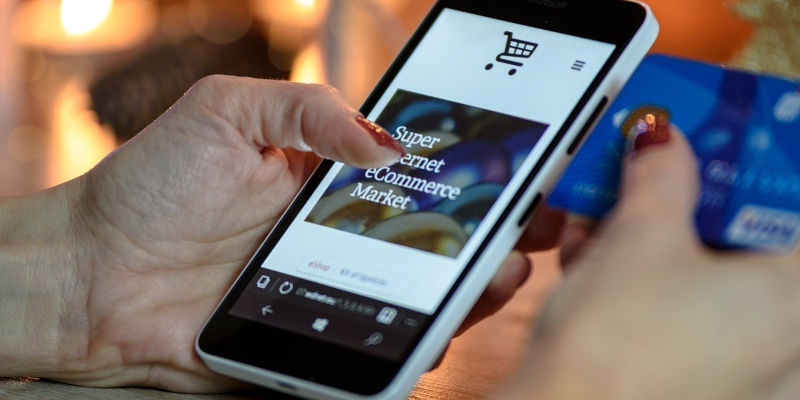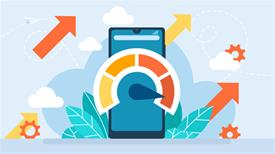5 Crucial Steps to Building a Killer Sales Funnel
As a business owner, you probably agree with the claim that one must never underestimate the importance of marketing.
Without it, your business would slowly but surely fail due to the lack of new customers. If there is no influx of new people coming to your website, you won’t be able to grow either.
So, what can you do to acquire new shoppers? How can you convert a visitor to a customer?
Well, you need a great sales funnel. You need to lead them through different stages of the funnel to the very end of it – a closed deal.
Yes, utilizing a sales funnel is the way to go. But, how can you devise a good funnel?
But before we list the actual steps, let’s explain the concept of a sales funnel.
What exactly is a sales funnel?
A sales funnel is a strategy that helps convert an individual into a customer. Its name is derived from the shape of the strategy in a diagram form. In other words, any sales strategy of this kind looks like a funnel when you turn it into a diagram.
Obviously, the category at the top has the largest number of people. These are your potential customers, your prospects.
On the other hand, the bottom category includes the smallest number of people. These are your committed customers. They are the ones that you have successfully led down the funnel.
Take a look below at the steps to creating a successful sales funnel.
Know your audience
This is the first step to building your killer sales funnel. So, if you decide to ignore it, you won’t be able to build any kind of successful strategy.
That’s why it’s important that you understand your target audience even before you begin building your sales funnel. To get a better understanding of who these individuals are, you need to figure out a few things.
- What are their pain points (problems that need to be solved)?
- What social media platforms are they using?
- What are their interests?
- >What do they dislike about shopping in general?
In order to come up with a great funnel, your products have to solve your prospects’ problems, you need to know where your ideal customers hang out, what their interests are, and what they hate about online shopping so that you don’t make the same mistake someone else did.
For a start, answers to these questions should steer you in the right direction.
Create buyer personas

A buyer persona is a model that represents your ideal customer based on market research and data you have gathered about your existing customers. Things to consider when creating your buyer persona are demographics, behavior patterns, motivations, and goals.
In fact, the more detailed you are, the better. Of course, you can build different buyer personas, targeting the specific segments of your customers with your marketing campaigns.
You can derive different and specific personas from research based on questions such as the ones below:
- Why do your customers need your products?
- What are the main influences that make them buy your product?
- How are they supposed to use your product after buying it?
These personas will help you make sure that all activities involved in the creation of the funnel are tailored to the targeted buyer’s needs. That’s the gist of this step.
So, create buyer personas and utilize them to the fullest. That’s how you will get the right people to go down your sales funnel.
Traffic generation
This one is quite simple – not a single person who isn’t introduced to your offers is able to buy from you.
So, you need to make people aware of what you are selling. Also, you should adopt different lead generation strategies to drive customers to your website.
Fortunately, there are many methods that you can use to drive traffic to your website. Some of the more prominent ones include:
- SEO
- PPC campaigns
- Guest posting
- Social media marketing
- Landing page optimization
See these methods as necessary measures you need to take in order to generate traffic. That will get your products or services in front of your potential customers’ eyes.
Plan to engage
Once you have mastered the previous step, you need to plan on engaging your audience. Your lead generation efforts won’t make any sense whatsoever if you don’t invest some effort into engaging your audience.
The potential prospects need to learn about your products and services if you want to grow your business. This, of course, may not be the easiest of tasks, but there are some strategies that can help you with engagement.
- Start writing high-quality blog posts.
- Consider making interesting videos that add value to your offerings.
- Talk to influencers about potential collaborations (reviews, tutorials, demos).
- Promote content on social media platforms.
- Utilize email marketing.
- Consider gamified website funnels
You’re most likely familiar with most of the strategies listed above. Still, the chances are that you haven’t heard of gamified website funnels yet.
As a matter of fact, these are quite effective digital solutions that can really help businesses boost conversion rates.
If this sounds interesting enough, you may want to check out Convincely. They are known for its great digital funnels that create excellent customer journeys which almost always end with conversions.
5. Conversion time!
It’s time for the final stage of your funnel. In other words, it’s conversion time!
Lead conversion is the last stage of the process where website visitors convert into paying customers.
Now, the biggest mistake some entrepreneurs and marketers make at this point is the elongated purchase process. Do not make this mistake!
Instead, make the purchase process as brief and simple as possible. This can be achieved by minimizing the number of form fields, for example. You can also cut the number of steps needed for completion of the purchase. Finally, add one-click options for the sign-in and sign-up.
Remember, this is the final phase. Therefore, it is crucial to do everything you can to make it as convenient for your customers as possible.
You’ve led them down the funnel this far, so it would be quite a shame to let them go away now.
Wrap-up
Once you build your perfect sales funnel, keep the momentum going.
Follow up with your new customers to make sure that they are happy and satisfied with your products and services.
Remain in contact with your customers, be there for them, and inform them about your new deals and services whenever you need to.
Always remember that being a successful entrepreneur requires a lot of continuous effort and a lot of patience. Just because you have devised a good sales funnel doesn’t mean that the story ends as soon as a customer makes a purchase.
Related Posts
In almost all forms of modern business, marketing is an essential function.
As the world of eCommerce continues to evolve, businesses are constantly seeking ways to stand out in the digital landscape. According to a report by Statista, it is predicted that global online sales will reach an impressive mark of $6.5 billion by 2023.
In the era of high-speed internet, owning a server with a 10Gbps connection offers an unparalleled advantage in terms of data transfer speed, website performance, and user experience.
To make your business successful in the modern age, you need to excel at digital marketing and have a strategy that can allow you to beat out the competition.
In the ever-evolving landscape of digital marketing, link building remains a cornerstone of search engine optimization (SEO).
In today's age, establishing an online brand presence is crucial for success. With the vast reach and accessibility of the internet, launching your brand online can open up endless opportunities for growth and expansion.













Comments
comments powered by Disqus